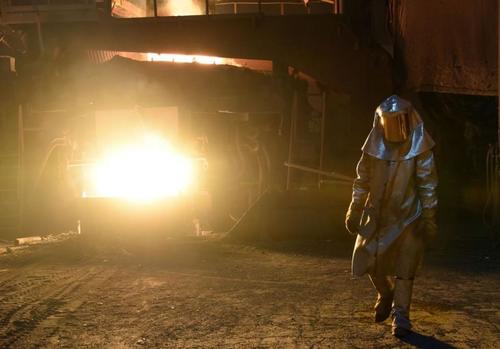US, EU Near Last-Minute Deal To Roll Trump-Era Tariffs On Steel And Aluminum
Nobody ever said 'Free Trade' was easy. As it happens, it isn't particularly "free" either.
But for months - practically the entire summer - President Biden's top trade representative Katherine Tai has been engaged in time-consuming negotiations with the EU's Valdis Dombrovskis about a new system that would prevent a trade dispute with the EU that began during the Trump era from spiraling out of control.
A few weeks ago, sources told Reuters that the US Trade Rep Katherine Tai felt she could resolve the dispute by the end of October. And according to a Bloomberg report published over the weekend, it looks like a deal to remove the steel and aluminum tariffs is finally within reach.

But with Halloween just one day away, it looks like a good-old-fashioned Democratic can-kick might the only option left, with the new deadline Dec. 1 - which, incidentally, is the day US tariffs on EU goods would double without a deal.
A deal would allow the US and the EU to remove tariffs on steel and aluminum that would eliminate more than $10 billion in export costs each year. It would also help reverse the protectionist stance that President Trump made a hallmark of his presidency, and which President Biden has often copied.
For those who were around for the beginning of the Trump Trade Wars, they should remember that the dispute with the Europeans began in 2018, when Trump slapped tariffs on steel and aluminum from Europe, Asia and pretty much everywhere else, using a provision of the American trade law allowing a supposed threat to national security to be invoked as an excuse to jack up tariffs. Specifically, Trump slapped a 25% duty on steel imports and 10% on duty on inward-bound shipments of aluminum from producers, with a handful of exceptions allowed for the NAFTA agreement. Tariffs on European metal and goods continue to escalate under Trump.

Still, Trump justified the tariffs with section 232 of the 1962 Trade Expansion Act, which deems competition in the international metals market a national-security threat. The statute allows for tariffs to be imposed without approval from Congress if the president claims that the imports represent a national security risk.
Of course, unwilling to simply sit back and allow Trump to victimize them with his aggressive economic nationalist policies, the EU quickly retaliated, and slammed its own tariffs on products EU leaders felt symbolized quintessentially American industries: For example, Harley-Davidson motorcycles, Levi Strauss jeans and Kentucky Bourbon.
Hope for a more broad-based deal intensified over the summer when Boeing and Airbus, the world's two biggest rivals in the aerospace industry finally dropped their years-long dispute at the WTO.
Now, if a deal isn't reached by the end of the year, even more barriers to trade will rise, which would be particularly problematic at a time when supply chains from Asia, to Africa, to Europe to the Americas are snarled in a way that has no real precedent.
For months now, Bloomberg and Reuters have reported that the two sides have been using a so-called "rate quotas" as a basis for their negotiations. A quota would, for example, impose a threshold on the amount of certain commodities that both sides can important from one another. However, if that threshold is broken, the tariff rate would revert to that first imposed during the Trump era, when President Trump started picking trade fights with American allies and geopolititical enemies alike.
But in the post-pandemic era, the US and EU face a greater common threat when it comes to trade: the growing influence of China.
Disclosure: Copyright ©2009-2021 ZeroHedge.com/ABC Media, LTD; All Rights Reserved. Zero Hedge is intended for Mature Audiences. Familiarize yourself with our legal and use policies ...
more


